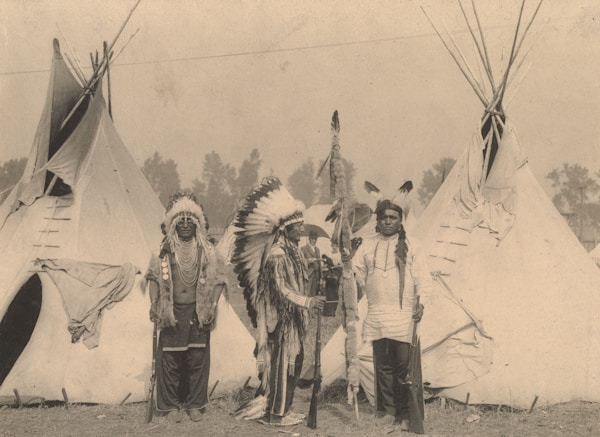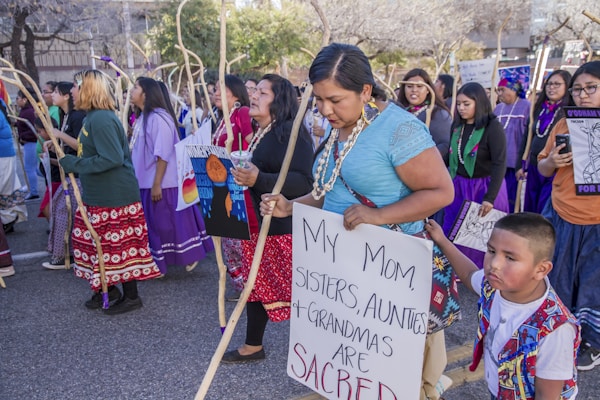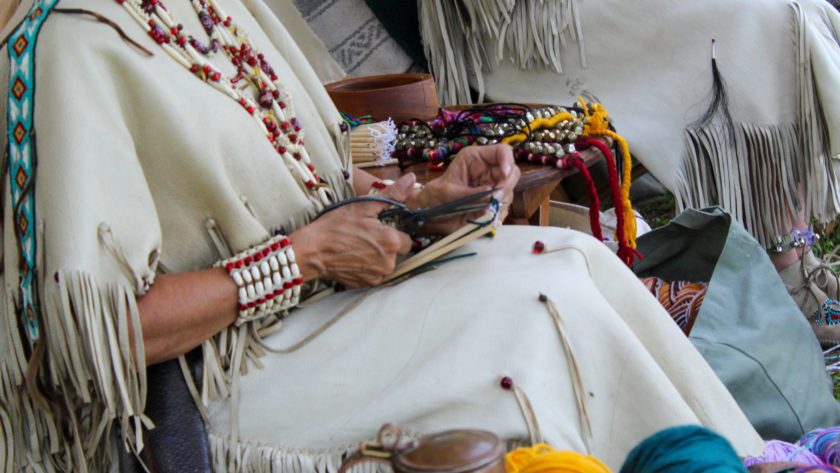Historically, Native American clothing was made from materials that were readily available to specific tribes. Animal skins and furs were common, along with fibers like cotton and wool. With the introduction of new trade goods, like metal needles and cloth, the style and construction of Native American clothing changed. Today, Native Americans still maintain many of the traditional styles of clothing, while also incorporating modern materials and designs, such as opting for trendy performance clothing and common name-brand clothes. Keep reading to learn more about the history of Native American clothing.
The 18th Century

Clothing for Aboriginal people in the 18th century varied depending on the region in which they lived. However, some general features could be said to be typical of Aboriginal clothing in this period. Men typically wore breechclouts—a piece of cloth that hung from the waist and covered the genitals—plus leggings and moccasins. They might also wear a shirt, a robe or a blanket, and a headdress. Women typically wore a dress made from a single piece of cloth, a wrap-around skirt, or a poncho. They might also wear a headdress, apron, leggings, and moccasins. One of the most distinctive features of Aboriginal clothing in the 18th century was the use of color and decoration. Many garments were decorated with fringes, beads, shells, feathers, and other materials. This was particularly common among the Plains tribes, who often used bright colors and elaborate designs to show their wealth and status. If you are Aboriginal and want to learn more about your family history and ancestry, there are DNA testing Native American options available.
The 19th Century
The clothing worn by Aboriginal people in the 19th century varied greatly from one tribe to the next, but there were some commonalities. Most men wore breechclouts—a simple piece of cloth that was worn around the waist and tied at the front or back—and leggings. They might also wear a blanket or poncho thrown over their shoulders. Women generally wore wraparound skirts and blouses made from a variety of materials, including cloth, animal skins, and feathers. Both men and women often adorned their clothing with beads, feathers, and other decorations.
While there were some similarities in the clothing of different Native American tribes, there was also a great deal of variation. For example, the clothing of the Plains tribes was very different from that of the tribes of the Southwest. The Plains tribes were nomadic, and their men wore garments made from animal skins that were decorated with beads and feathers. The Southwest tribes were more settled, and their women wore skirts made from woven materials and blouses with colorful designs.
The 20th Century
Throughout the 20th century, Aboriginal clothing continued to evolve and reflect the changing times and cultures of the people who wore it. While some traditional styles and designs remained popular, many new styles emerged in response to modern influences. In the early years of the century, most Native American clothing was made of natural materials, but by the end of the century, it was increasingly made of synthetic materials. One of the most iconic pieces of Native American clothing in the 20th century was the moccasin, which was originally designed for practical purposes but soon became a symbol of Native American culture and identity. War bonnets, which were traditionally worn by male warriors, also became popular among all Native Americans in the 20th century and were worn for a variety of occasions.
Today

When most people think of traditional Native American clothing, they imagine items like feathered headdresses and animal skin cloaks. While these items were once common, they are no longer typically worn by Native Americans today. Instead, modern Native American clothing is much more similar to the clothes that you wear. There is a wide range of Native American clothing styles, depending on the tribe and region. However, many traditional items have been adapted or replaced with modern versions. For example, instead of animal skin cloaks, many Native Americans now wear parkas or other outerwear. And rather than feathered headdresses, many athletes and performers now wear traditional feathered headbands.
The history of Native American clothing is an important aspect of the culture and tradition of Native Americans. The clothing has been used to communicate important messages and has served as a way to identify different tribes. The clothing has also been used to protect against the elements and to show the wearer’s rank or status.



